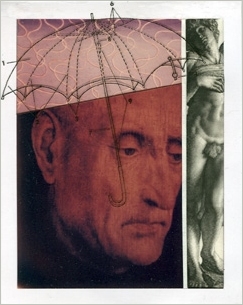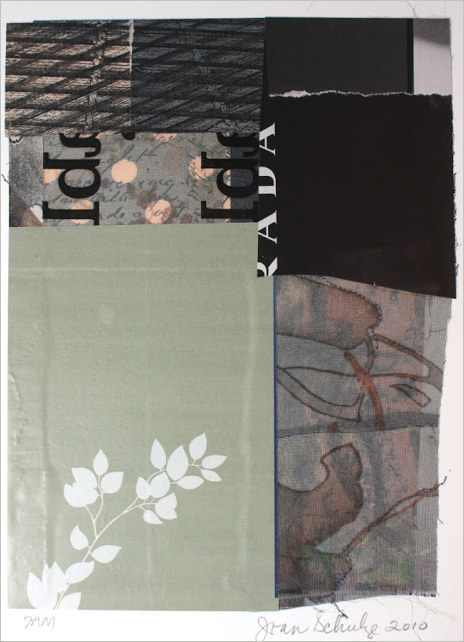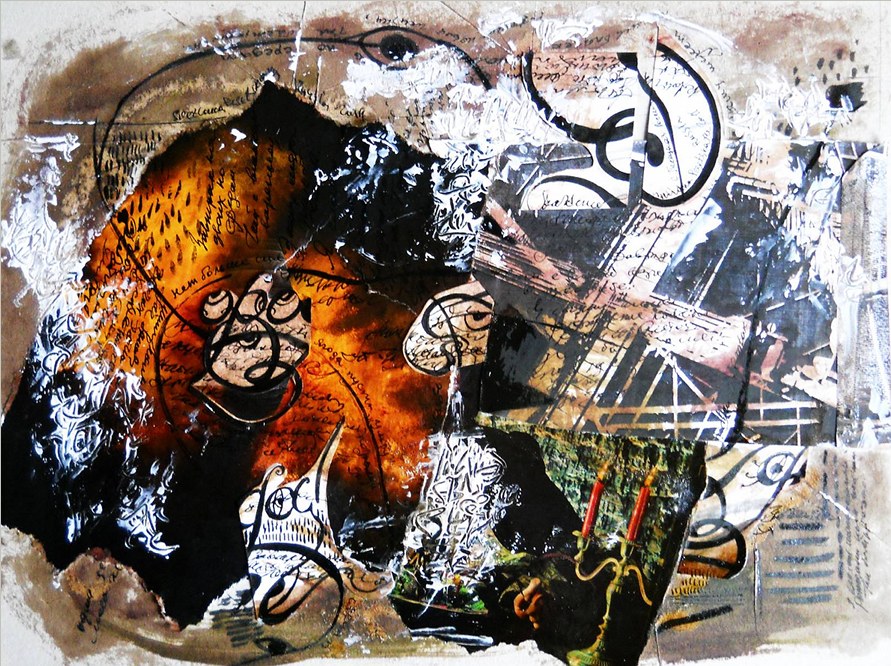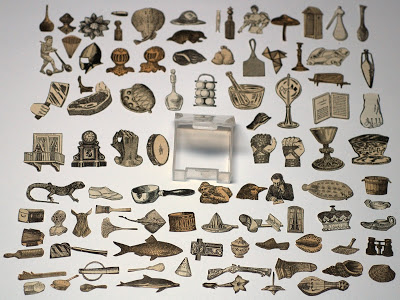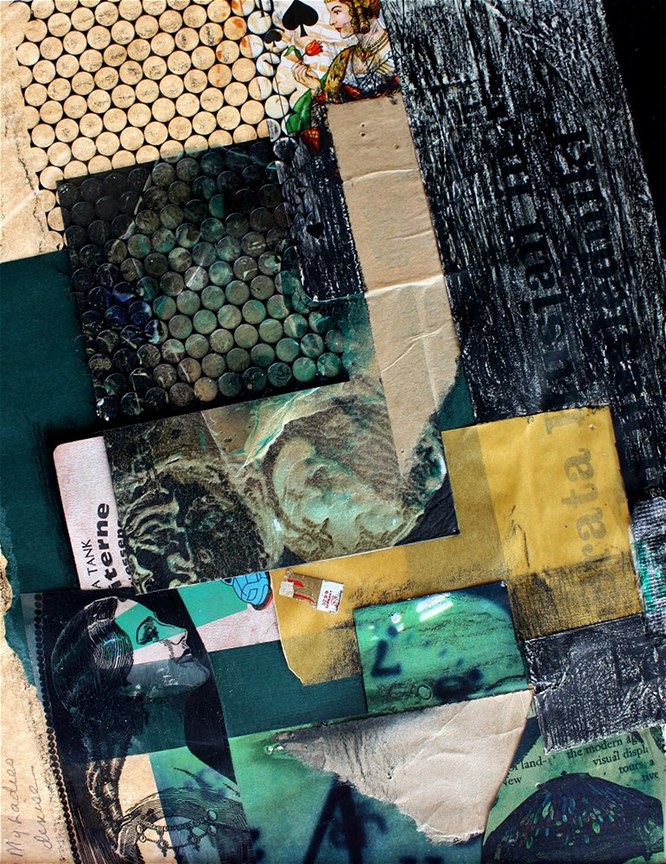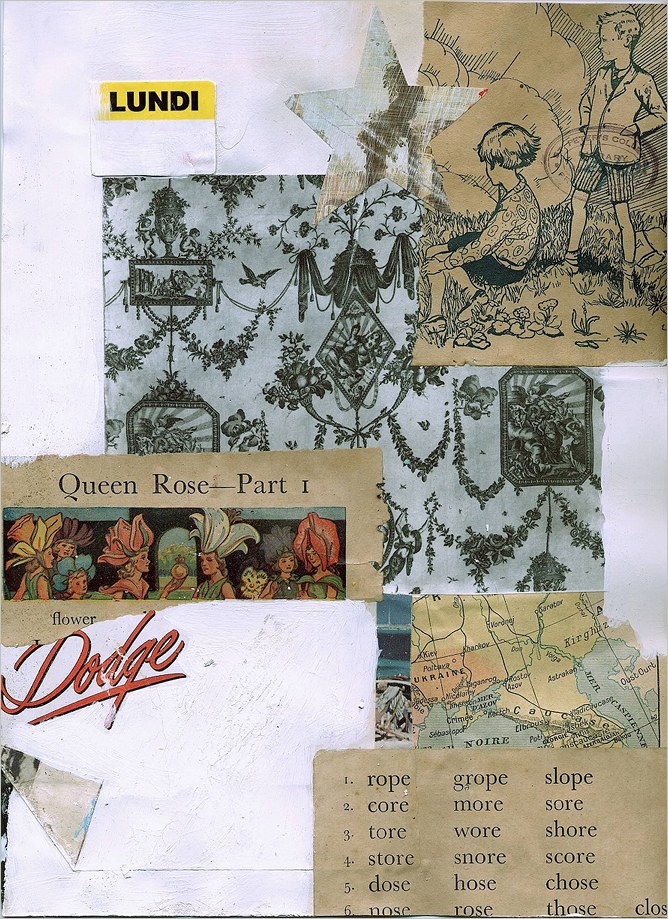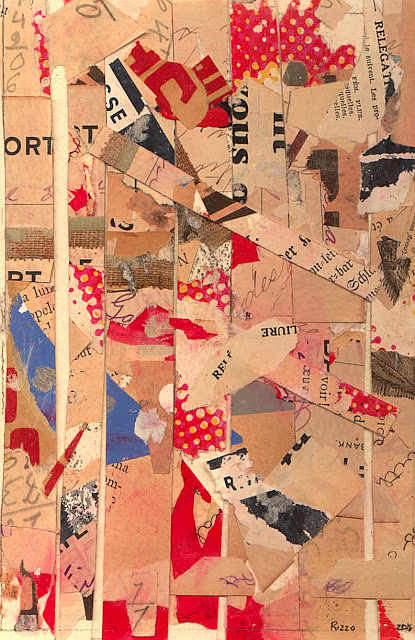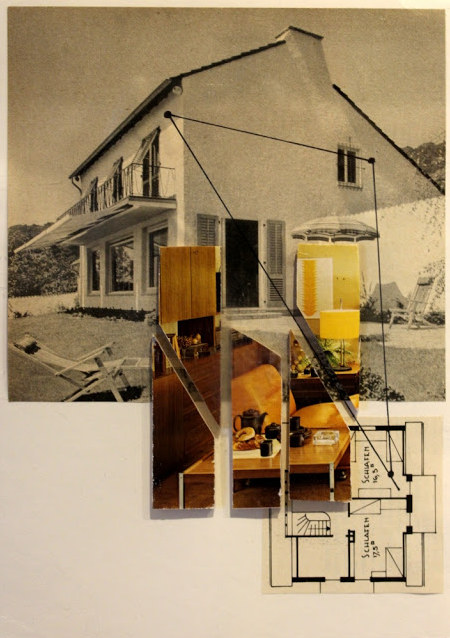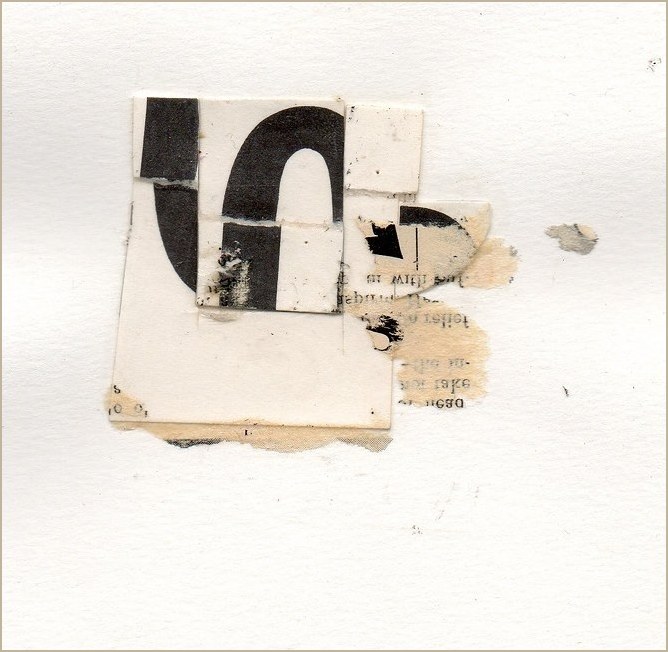“Though he was not connected with any political party, his art was regularly vilified as a threat to traditional German values, while he himself was denounced as ‘unpatriotic’ or, just as often, insane. Yet Schwitters thrived on public opposition, and from 1919 to 1923 he created a succession of Merz pictures which are now seen as his greatest contribution to twentieth century art. These pictures carry an inner tension that derives from the sensitive juxtaposition of abstraction and realism, aesthetics and rubbish, art and life, and their innate dynamism is one of the characteristics of Merz.”
— Gwendolen Webster
Today’s featured collage, inspired by some of the superlative work being done by my friends during this centennial year for the medium, is a bit larger than my typical miniature. To produce an “artifact,” I began with the cover of a ruined book, and before long I realized I had a strictly nonrepresentational composition on my hands. Created spontaneously at a close viewing distance, it wasn’t until I stepped back after completion that it brought to mind the kind of image one might view from the window of an upper story, looking across an urban landscape, with light and shadow playing off facades and roof lines. The way in which the mind attempts to unravel layers of symbolic meaning from the purely abstract is endlessly intriguing to me.
Those of us who create art within this particular genre are indebted to the increasingly exalted legacy of Kurt Schwitters and his original conception of Merz. I often think about how we have been liberated to explore the inexhaustible potential of this approach and to disclose our aesthetic vision within the accepted playground of modern art. Never forget that the man who fully defined this visual language for us did so at genuine risk to his personal freedom and safety. We may not always describe our works as a tribute to the enduring idea of Merz, but that is precisely what they are. Schwitters said, “Merz means creating relationships, preferably between all things in the world.” One fine aspect of that is the new connections and friendships that grow out of mutual interest in collage during its one-hundredth year. Check out the online galleries of Launa D Romoff, Teri Dryden, Scott Gordon, and Joan Schulze. You may agree with me that these artists are among today’s “Heirs to KS.” I hope to discover many more and to share their creative output at this site. Please stop by again soon.
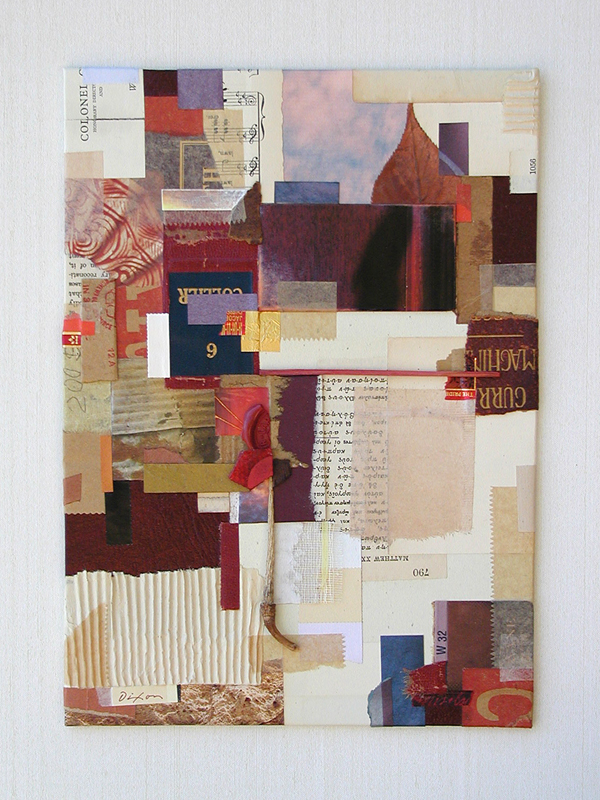
Structural Integrity
collage artifact by J A Dixon
8 x 10.5 inches
• S O L D
